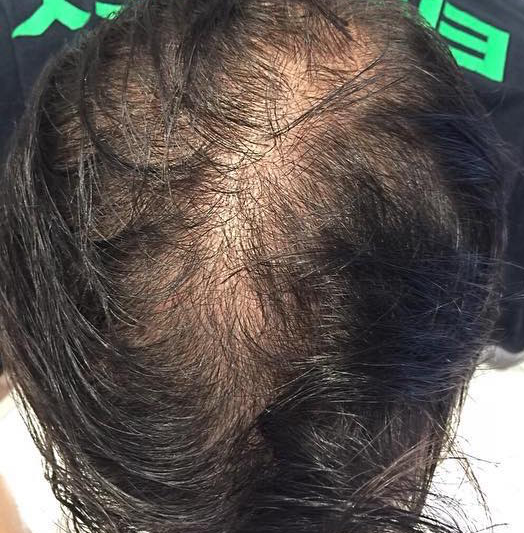Home / How We Treat / Platelet Rich Plasma
What Is PRP?
Platelet Rich Plasma (PRP) is a therapy that uses the patient’s own blood derived platelets, in a concentrated form.
Platelets are integral to blood clotting and wound healing, so medical practitioners often choose to inject PRP near injury sites to speed the body's natural healing processes.
PRP Treatment for Hair
By applying PRP directly to the scalp with microneedling, you'll enjoy a treatment that can return your hair to its natural, thriving state of growth.
Though the use of PRP in addressing hair loss is a fairly recent technology, initial studies suggest that injecting or microneedling PRP into the scalp may be very beneficial as a treatment to generate new hair growth.
PRP can be used on its own to stimulate inactive hair follicles, or can in conjunction with other treatments non-invasive, regenerative treatments such as Mesotherapy.
PRP can be injected in conjunction with other systems to stimulate hair follicles to grow new hair as one aspect of a comprehensive treatment plan. We call this treatment Plasma-Plus™ and it's exclusive to NRHT. Contact us today for arguably be best treatment of PRP hair restoration Atlanta has to offer.
PRP with Microneedling
Microneedling is a safe, office-based procedure that allows us to take PRP therapy to the next level. The purpose of the microneedles is to reach the lower layer of your skin, the dermis. It is in the dermis where collagen is made, the building block of your hair. It is also in the dermis where the signs of aging and sun damage show up. So being able to get to the dermis is critical to produce results.
So we have these microneedles forming small channels to the dermis and inducing new collagen formation. We also have PRP growth factors that can start tissue repair. Why not combine them for even greater results?
Microneedling with PRP does just that. Your PRP is obtained and placed on those newly formed microchannels. The PRP is drawn down to the dermis where it can further increase collagen production and skin rejuvenation. This can all be done in-office using topical anesthesia. It should be repeated every 4-6 weeks for even better results.
Common Questions
- How long does the treatment take to administer?
PRP is done a comfortable, in-office, non-surgical procedure that takes about an hour start-to-finish, and most of that time is spent in the preparation phase… meaning you, the patient, is just relaxing!
- What are the side effects of prp hair treatments?
Most patients notice a brief period of inflammation during which their scalp remains somewhat pink and numb for a few hours. However Inflammation is not just a side effect, it's the desired result! Inflammation causes the scalp to regenerate healthy collagen, which leads to hair growth.
Swelling is rare (about 15% of the time) and if it occurs is noticeable in the forehead or around the eye area on the next day. Any swelling takes about a day or two to resolve.
Patients with certain blood disorders or on certain medications are not candidates for PRP treatments. PRP poses little risk of allergy, hypersensitivity or foreign-body reactions since it's simply re-purposing your own DNA.
- How long until i see the results of prp treatments?
Hair growth improvements can typically be measured in about three months, but it takes six to twelve months to visually “see” the difference in photos and in the mirror.
Results are permanent. According to published reports, PRP tends to improve hair caliber and hair growth in about four to six weeks, requiring multiple repeated treatments for at least 6 months. Combined with Mesotherapy, the effects of PRP have been reported to be stronger and last longer.
- Is there a recovery period or downtime after PRP treatments?
There is no activity restriction after a PRP treatment. Patients may shower/shampoo/condition their hair normally just several hours after the treatment and resume normal daily and athletic activities. As mentioned previously, some brief mild inflammation noticeable as redness/pinkness and numbness of the scalp may be present for several hours. No harsh chemical coloring or perming treatments should be performed for at least 72 hours. Use of topical hair growth treatments like Minoxidil 82M or similar can resume the next day. Red Laser therapy treatments can also be resumed the next day.
- Are there any contraindications or other factors that would make someone ineligible for PRP?
Patients should be educated by their Hair Restoration Trichologist as to what results they could expect from PRP in various areas of the scalp. Different areas of the scalp may respond differently to PRP depending on the amount of weak hair follicles present in each zone. Generally, with the exception of small round areas of alopecia areata, locations where severe depletion of follicles has occurred should not be treated. The vast majority of healthy individuals can easily undergo PRP treatments. Certain conditions like blood and platelet disorders, chronic liver disease, presence of an active severe infection, cardiovascular or hemodynamic instability and/or the presence of anti-coagulation therapy (e.g. warfarin) would make PRP contraindicated. Recent steroid treatments and smoking are relative contraindications and should be discussed with your Hair Restoration Trichologist.
Learn more about:
Why Nina Ross Hair Therapy?
Natural Beauty + PERSONALIZED TREATMENTS
Founder of NRHT - Shanina "Nina Ross" Lassiter
Transformations
View Real Patient Before & Afters
Reviews
see testimonials from current clients
Get answers from a specialist
Request a phone call and get your questions answered
Call 678.561.4522












